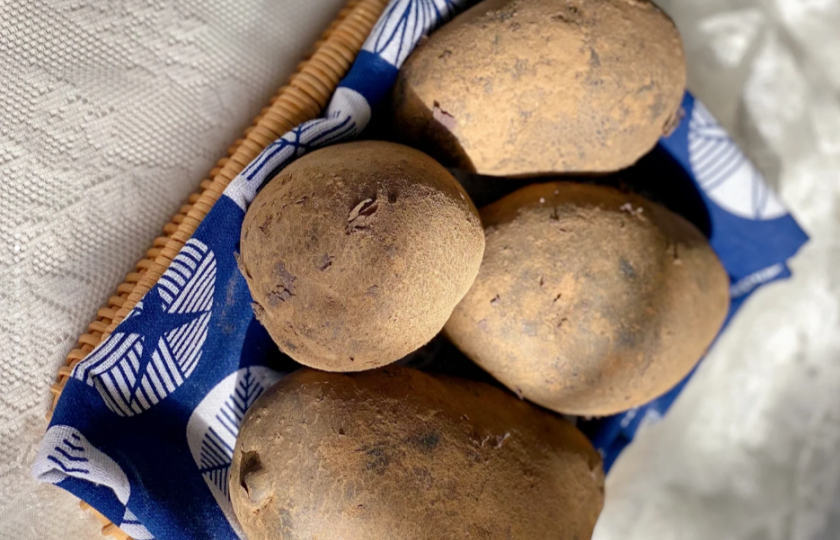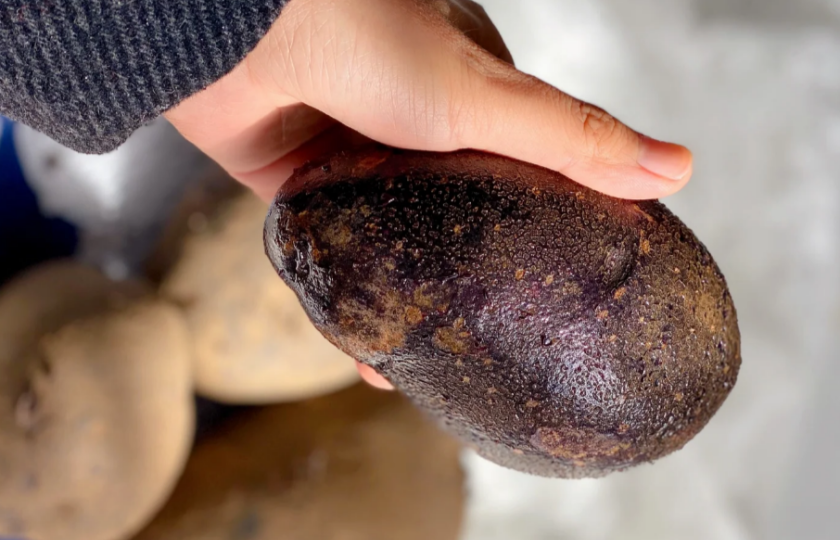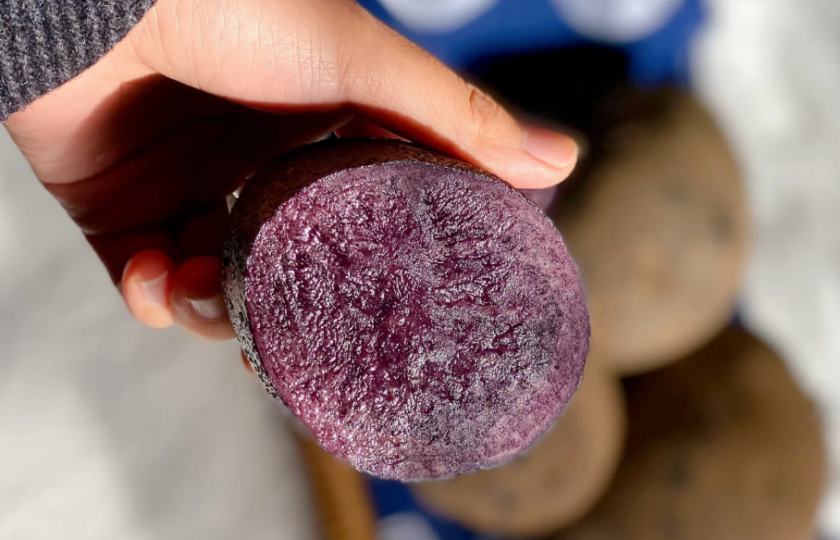Have you ever wondered why your purple potato tastes bitter? Here's why!

The purple potatoes made by a friend's family at a party tasted bitter. It's very strange. Obviously, they weren't bitter before. Why do purple potatoes have a bitter taste? Let's explore this well today!
Why is my purple potato bitter?
The bitterness of purple potatoes may be caused by the following reasons:
First, consider that it is caused by variety reasons. Some purple potato varieties themselves have a bitter taste because different potato varieties have differences in the composition of flavor substances.
Second, consider that the bitterness is caused by improper storage of purple potatoes. During the storage process of purple potatoes, if the temperature is not appropriate, for example, being in a high-temperature environment for a long time, it will promote some biochemical reactions. This causes certain components in potatoes to change, and then produces a bitter taste.
If the storage place has high humidity, it is also easy to cause potatoes to sprout or mold. At this time, the bitterness is more obvious. Once sprouted, potatoes will produce solanine, which is not only bitter but also harmful to the human body. Therefore, sprouted purple potatoes cannot be eaten.
In addition, the growing environment also affects the taste of purple potatoes. If the soil contains too many heavy metals or other harmful substances, purple potatoes may absorb these substances during the growth process, affecting their taste and flavor, and perhaps a bitter taste will appear.
Cooking methods may also cause purple potatoes to taste bitter. For example, if purple potatoes are cleaned and there are residual soil or impurities on the surface, it will affect the taste. Or if the cooking heat is not well controlled and the potatoes are burned or cooked for too long, it will also make them taste bitter.
What do purple potatoes taste like?
The taste of purple potatoes is a bit different from that of ordinary yellow-skinned potatoes. The overall taste of purple potatoes is relatively mild and sweet, and they are more delicate and soft than ordinary potatoes.
Under normal circumstances, purple potatoes have a faint potato fragrance. After being cooked, purple potatoes have a relatively soft and glutinous texture and a faint sweet taste. This kind of sweetness is natural and fresh.
If purple potatoes are baked, their skins will have a slightly burnt fragrance. After biting open, the inside is soft and sweet, emitting a stronger potato fragrance. The taste is really great.
How can you tell if purple potatoes have gone bad?
You can tell whether purple potatoes have gone bad by the following methods:
Look at the color
Under normal circumstances, the skin of fresh purple potatoes is smooth and the color is evenly distributed. If there are obvious black spots, green spots or pits on the skin of purple potatoes, it is very likely that they have gone bad.
Black spots may be caused by being infected by germs. Green spots are usually caused by toxins produced when purple potatoes are exposed to light for a long time. Pitted parts are signs of internal decay.

Smell
You can judge by smelling the purple potatoes. Good-quality purple potatoes usually have a faint earthy smell or potato fragrance. If you smell a sour, musty or pungent smell when you get close, it means that the purple potatoes have gone bad.
Look at the texture
When choosing potatoes, you can pinch purple potatoes with your hands. Fresh purple potatoes have a firm texture and have a certain hardness when pinched. If it feels soft and caves in when pinched, it means that the internal structure of purple potatoes has been damaged and is likely to have gone bad.
Look inside
You can cut open purple potatoes and observe their internal colors. If the inside of purple potatoes is black, brown, or there are moldy parts, there is no doubt that they have gone bad.
What can you do with purple potatoes when they go bad?
Purple potatoes that have gone bad cannot be eaten anymore because they will contain a large amount of harmful substances. After human consumption, it may cause discomfort symptoms such as abdominal pain and diarrhea.
But it's not completely useless. If the degree of spoilage of purple potatoes is relatively light, for example, only a small part is problematic, you can cut off the good part and use it for composting. Bury it in the soil of the garden or flower pot. After rotting, it can provide nutrients for plants.
If purple potatoes are seriously spoiled, you can use them as a natural cleaner. Put the spoiled purple potatoes in a breathable bag and place it in places such as the refrigerator or shoe cabinet. It can help absorb odors. However, remember to replace it in time to avoid the recurrence of odors.
Are purple potatoes genetically modified?
No.
Genetically modified crops refer to artificially synthesizing genes in the laboratory and introducing gene sequences into crop cells to achieve specific functions. Purple-skinned potatoes are a common variety. Their peels are purple, their flesh is light yellow, they have a delicate texture, a sweet taste and are rich in nutrition. Now, it has become one of the vegetables widely planted by farmers.
What are the nutritional values of purple potatoes?
Purple potatoes contain a large amount of vitamins C, A, E and B vitamins, as well as various minerals such as calcium, iron, phosphorus, potassium and magnesium, which help maintain the normal physiological functions of the body.

Purple potatoes contain a large amount of anthocyanin substances, which are natural free radical scavengers and have significant antioxidant effects. They can help delay aging and enhance immunity.
Purple potatoes also contain a large amount of dietary fiber. These substances help promote intestinal peristalsis, prevent constipation and maintain intestinal health, which is beneficial to human health.
Purple potatoes have a relatively low calorie content and are suitable for people who are losing weight. Coupled with their high fiber content, they help increase satiety and assist in weight management.























